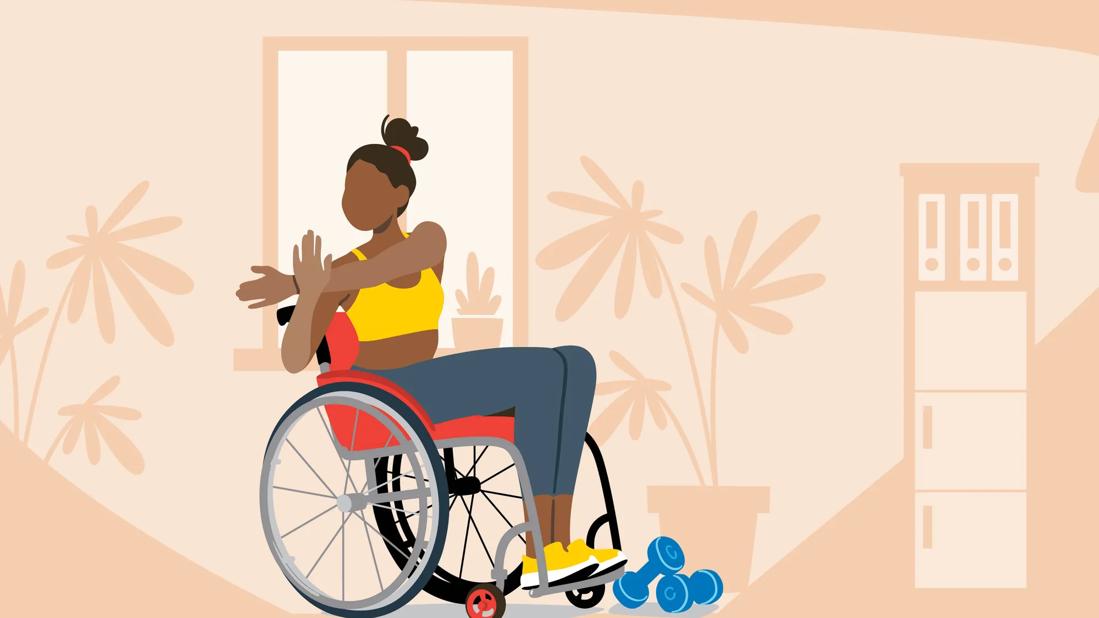Low-level, dull soreness that goes away with rest or physical activity is normal — but if it lingers or worsens, see a healthcare provider

Athletes, fitness buffs and novices alike all know the saying, “No pain, no gain.” To some extent, this saying is true.
Advertisement
Cleveland Clinic is a non-profit academic medical center. Advertising on our site helps support our mission. We do not endorse non-Cleveland Clinic products or services. Policy
Weight-bearing and cardiovascular activities stress the body. As a result of that stress, we enhance our strength and endurance and build muscle over time. By pushing our physical boundaries, we optimize our athletic performance. But this process is almost always at the cost of feeling some level of pain or soreness.
“A certain low level of soreness is acceptable, but you should not push through pain while exercising,” says sports medicine physician Dominic King, DO.
Dr. King breaks down when pain should be cause for concern and how you can alleviate some of the pain without falling back on your goals.
If you’re only experiencing low-level soreness in the days following a workout, Dr. King says it’s probably OK to try a lighter workout than you’re used to. Some physical activity might actually help ease the achiness you’re feeling. Once you get started, you might feel up for taking on the rest of your routine.
But if your soreness is more painful or you feel like it’s harder to do your routine exercises, it’s best to avoid strenuous activity until you’re no longer sore.
Muscle soreness after exercising is completely normal, especially if you’re starting a new exercise for the very first time or you’re exercising after a long period of rest. This soreness is called “delayed onset muscle soreness (DOMS)” and tends to develop hours or days after intense exercise.
Advertisement
On a physiological level, you’re experiencing this low-level soreness because your muscles are learning how to perform the workout that you’re doing. And in response to lifting weights and exerting stress during each of your exercises, your muscles experience microtears. Over time, with the help of protein and rest, your muscles fill these microtears in with newer and stronger muscle. This is how you continue to build muscle mass.
In most cases, this soreness goes away on its own within a few days and becomes less severe or frequent the more you work out those same muscles. Over time, as you progress through your strength training routine, you might experience DOMS again with more complex challenges until your muscles become accustomed to the stress.
Soreness is good after a workout if it’s a dull, low-level pain that goes away on its own with rest or gets better with regular physical activity. If you can quantify your pain as a 2 or 3 on a scale of 1 to 10, and your pain isn’t getting worse during exercise or limiting your ability to do other daily activities, the pain you’re feeling is probably natural and OK.
If you experience this kind of pain, there are some at-home solutions you can try that will reduce the severity of your pain and help your muscles recover more efficiently.
But sudden, strong, sharp or persistent pain that develops while you’re exercising is something of a concern.
“Pain represents injury,” Dr. King clarifies. “It’s your body’s way of signaling that something needs attention — often, the result of overuse or too much stress on a muscle or tendon. Instead of pushing through pain, listen to your body, respect its limits and give it the care and recovery it needs.”
If you experience any of the following symptoms, it may be a sign of a musculoskeletal strain or an overuse injury and should be looked at by a healthcare provider:
When you exercise, you want your muscles to feel some sort of fatigue — like you actually put them to work. If you’re not feeling sore after a workout, it could mean one of two things:
Advertisement
When it comes to increasing the challenge of a workout, gradual progression is key. “You should only increase the difficulty of an exercise when your current routine starts to feel manageable and no longer challenges you,” Dr. King advises. A good rule of thumb is the “10% rule” — whether it’s increasing weight, duration or intensity, aim for no more than a 10% increase per week to prevent overuse injuries.
Another way to gauge readiness is through the “talk test.”
“If you can carry on a conversation easily during your workout, it may be time to increase intensity,” Dr. King suggests. Similarly, on a scale of 1 to 10, where 10 is maximal effort, workouts should generally feel around a 6 to 8 for strength training and conditioning.
“The key is to challenge yourself without breaking yourself,” he adds. “Focus on progress, not punishment. Small, consistent improvements lead to big results over time.”
Advertisement
Learn more about our editorial process.
Advertisement

You can improve your athletic performance over time by breaking up your workout regimen into focused cycles

Lower-intensity workouts can deliver high-quality health and fitness results

Incremental changes in your exercise routine can improve your strength and endurance over time

Understanding heart rate zones can help you tailor your workout to reach your goals

Increase the size of your muscles by bulking up on protein and focusing on slow, intense movements with progressive overloading

Low-impact exercises help you recover faster between sets, during cool downs and on rest days

Eccentric is slow and steady, while concentric is fast and controlled

Weightlifting can help you build muscle mass, reduce joint pain and increase flexibility to improve your quality of life

The best parenting style balances enforcing rules and showing plenty of love

Tips include cutting back on sugar, focusing on exercise and managing stress

It can be harder to let go when you’ve invested time, energy and emotions — but it might be the healthier choice long term